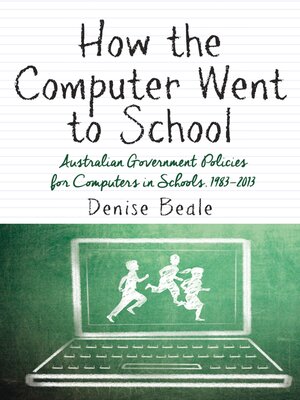How the Computer Went to School
ebook ∣ Australian Government Policies for Computers in Schools, 1983–2013 · Education
By Denise Beale

Sign up to save your library
With an OverDrive account, you can save your favorite libraries for at-a-glance information about availability. Find out more about OverDrive accounts.
Find this title in Libby, the library reading app by OverDrive.



Search for a digital library with this title
Title found at these libraries:
| Library Name | Distance |
|---|---|
| Loading... |
Over more than thirty years, particular governments, individuals and organisations have actively promoted computers as learning technologies. Enormous amounts of money and time have been spent promoting specific kinds of educational computing, and distinct policies by which these might be implemented.The view that computers can enhance student learning has gained broad acceptance. When schools promote the use in their classrooms of the latest computing technology – now tablets – they signal technological sophistication and the academic success which computers, allied with learning, are assumed to bring. The association of computers with success in school, however, is neither a natural nor an inevitable phenomenon. The view that all school children will benefit equally from access to computers overlooks inequities associated with differing patterns of use. How the Computer Went to School gives an account of the origins and development of the computer industry in the United States and shows how these influenced educational computing in both that country and Australia. It explores government policy visions which prioritise the economic benefits of educational computing for the nation and asks questions about the proper role of the computer in education and society more generally.







